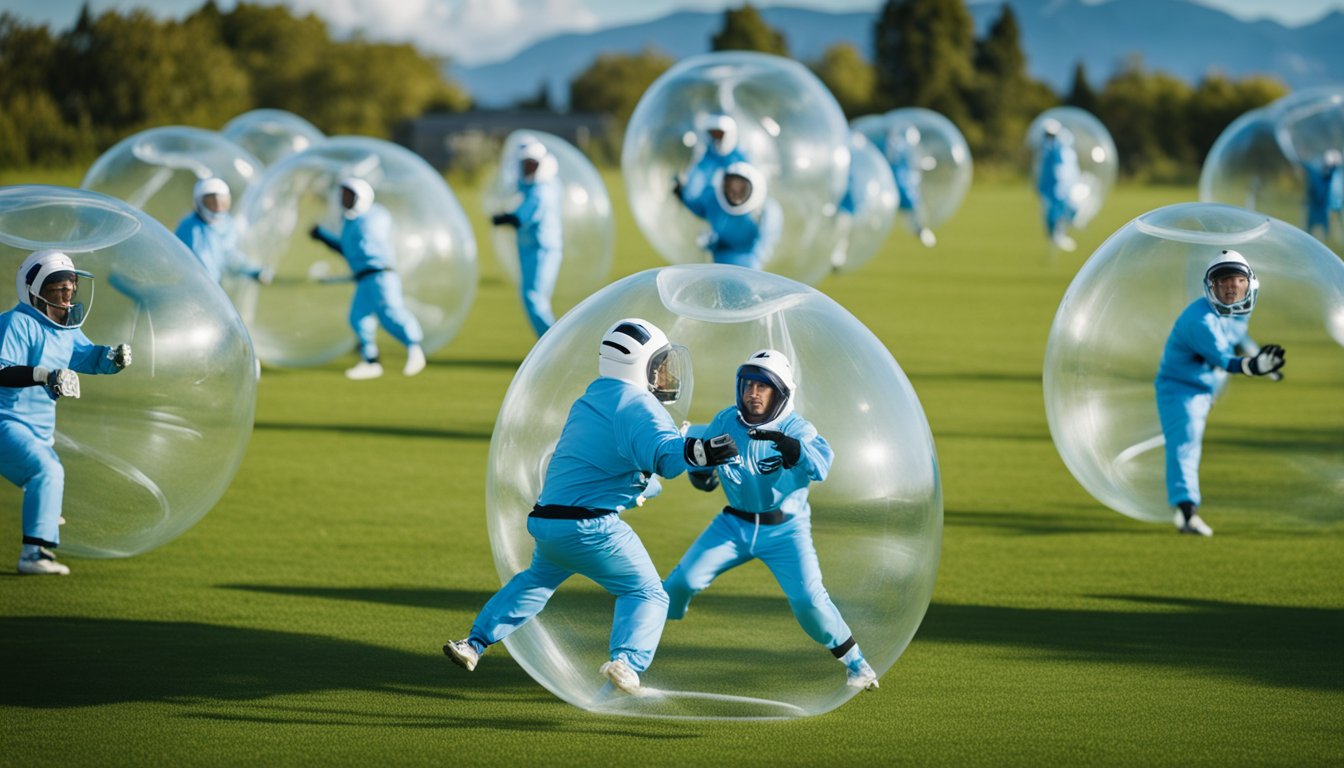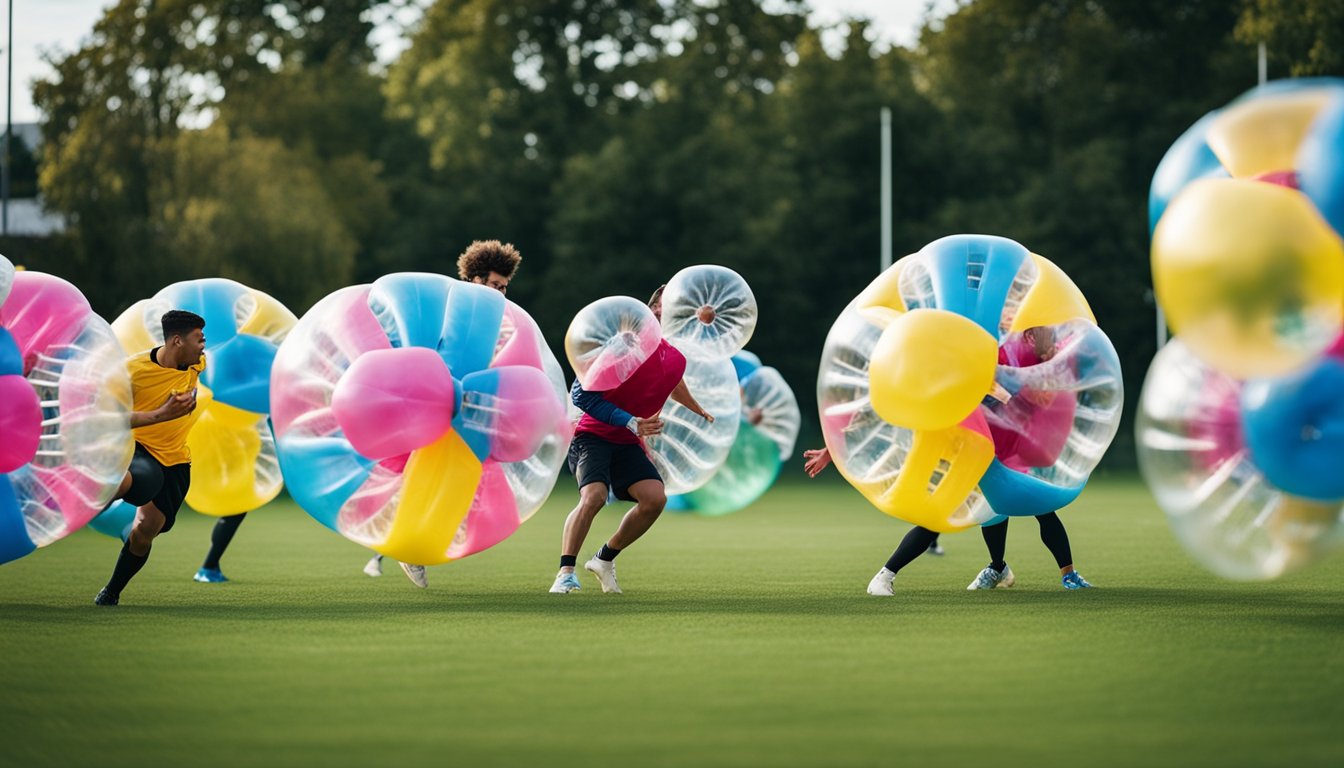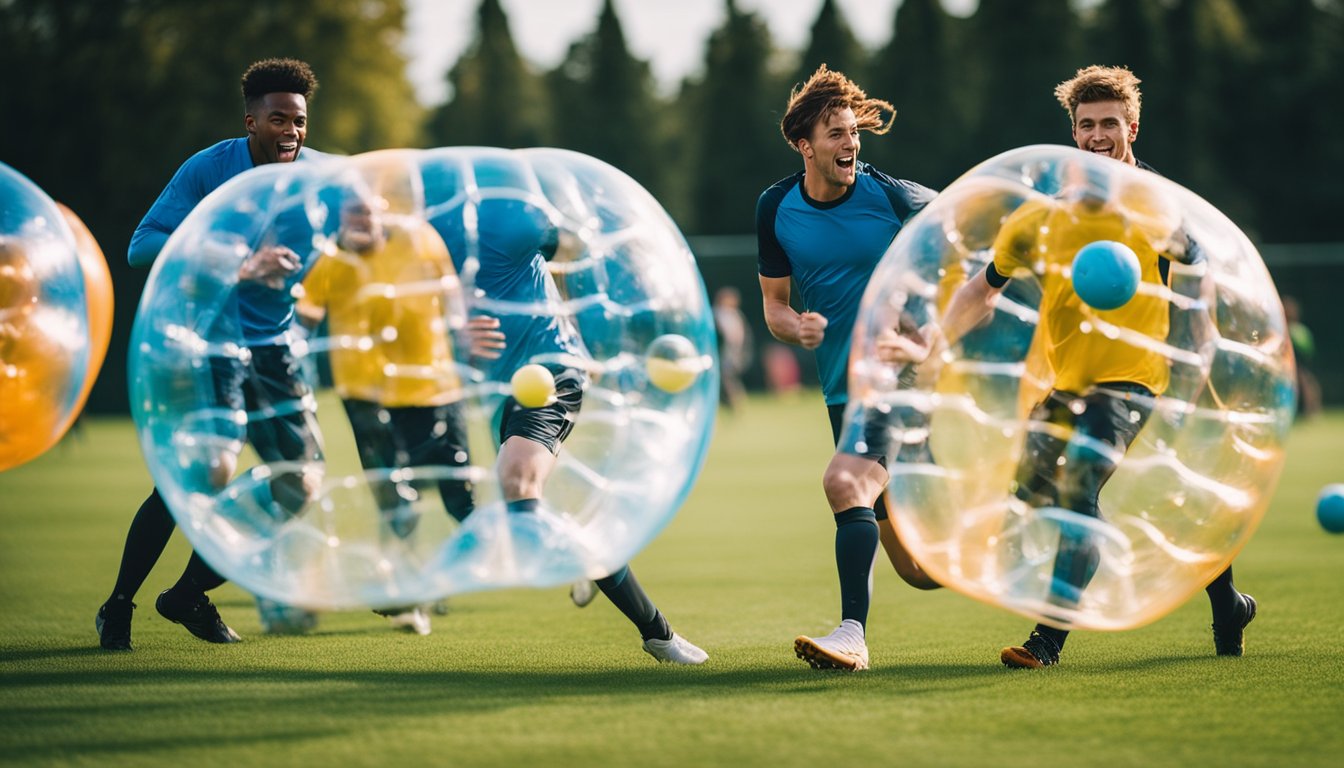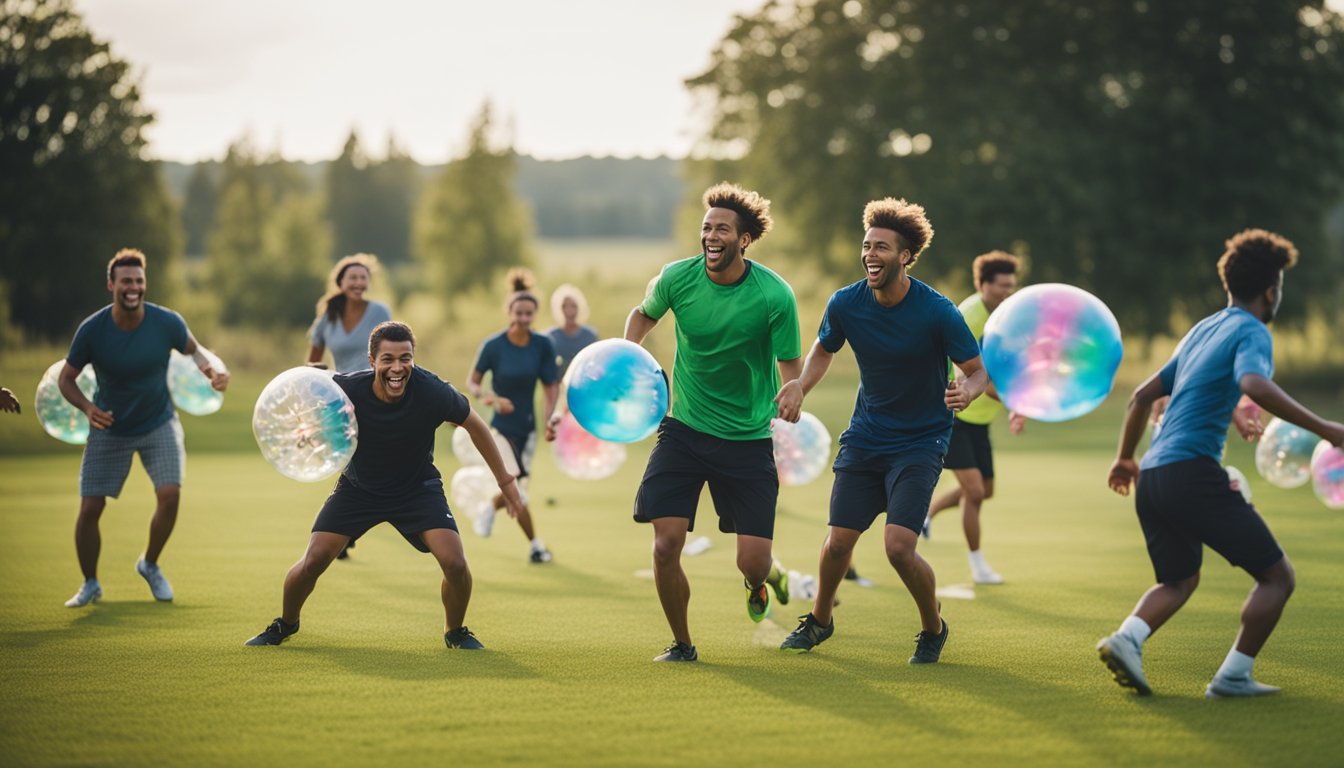Late updated: 10 Jul 2024 12:07
Written by: Emma Saunders
Bubble Football Photography Tips: Capture Action-Packed Moments
Grasping the art of bubble football photography is not just about capturing the action; it's about freezing moments of fun, laughter, and chaos. As the players bounce and roll in their transparent bubbles, unique and often hilarious opportunities for photos arise. Key to capturing the essence of bubble football is positioning yourself to get the best angle and anticipating the unpredictable movements of the players.

Using a high shutter speed is essential to ensure crisp and clear images of the fast-moving action. This will help you freeze those moments of players in mid-air or colliding with one another. Additionally, consider the lighting conditions of your setting; outdoor natural light is ideal, but if indoors, adjust your settings accordingly to avoid blurry shots.
Experimenting with different techniques can make your photos stand out. For instance, using a wide-angle lens can capture the whole field and all the bubbly chaos within it. Remember to capture facial expressions through the bubbles; they often tell the most amusing stories of the game.
Key Takeaways
- Master the basics of bubble football photography
- Use technical adjustments like high shutter speed and proper lighting
- Experiment with wide-angle and focus on capturing expressions
Essentials of Bubble Football Photography

Capturing the excitement and dynamics of bubble football requires a good grasp of the game's unique movements, the right camera equipment, and precise focus and framing techniques.
Understanding Bubble Football Dynamics
Bubble football, also known as zorb football, involves players encased in inflatable bubbles, leading to unpredictable and entertaining movement. The bouncing and rolling make for high-energy, chaotic scenes perfect for photography. Recognising these dynamic movements allows us to anticipate the action and position ourselves accordingly.
Knowing the basic rules, like how long a match lasts and typical gameplay, gives us better control over what moments to capture. Ensuring safety by being alert to incoming players can help prevent unintentional collisions while we are engrossed in taking our shots.
Camera Equipment and Settings
Selecting the right camera equipment is crucial. DSLR or mirrorless camera bodies offer flexibility and quality. Long lenses with a focal length of 70-200mm are ideal for capturing action from a distance. For closer shots, a lens in the 24-70mm range works well.
We should keep an extra set of batteries and memory cards to avoid interruptions. Using a tripod or monopod can stabilise the camera during long periods, especially if we are using a heavier lens.
Settings should be tailored to the fast-paced action of bubble football. Shutter speed around 1/1000th of a second will freeze movement, while an aperture between f/2.8 and f/5.6 provides good depth of field. ISO settings should be adjusted based on lighting but should reach a maximum of 1600 to avoid graininess.
Mastering the Art of Focus and Framing
Focusing on fast-moving subjects like bubble football players can be challenging. Using continuous autofocus (C-AF) can help keep the subjects sharp. Setting the camera to manual mode allows us more precise control over focus points and exposure settings.
Framing the shot is equally important. Capturing the entire action sequence from various angles, such as from the sidelines or slightly elevated positions, can add depth to the images. Moving around and experimenting with different perspectives will provide a richer visual story.
We should always be prepared to adapt our technique as the game progresses, ensuring we capture both the broad scene and the individual moments of joy and impact.
Advanced Techniques for Capturing Stunning Images

Stunning bubble football photographs can be achieved through advanced techniques such as effective lighting, creative macro photography, and meticulous post-processing. These techniques can help highlight the dynamic and fun aspects of bubble football.
Utilising Lighting and Flash Photography
Effective use of lighting and flash can dramatically improve your bubble football photos.
To begin, a strong light source is essential, especially in low-light conditions. An external flash can be invaluable. Position it to the side or use a softbox to soften the harsh shadows that may occur with a direct flash.
Backlighting can add an interesting halo effect around the bubbles, making them stand out. Ensure you balance the backlight with fill light from the front to avoid losing the details of the players.
Flash duration matters. A shorter flash duration will help freeze the fast movements of players. Pairing a flash with burst mode can also capture multiple frames in quick succession, ensuring some stunning action shots.
Exploring Macro Techniques in Bubble Football
Macro photography can offer a unique perspective on bubble football by capturing the finer details.
Using a macro lens allows us to focus on intricate textures and patterns of the bubbles. Attachment of extension tubes to standard lenses increases magnification, bringing soap bubbles into sharp focus.
Depth of field considerations are crucial here. A shallow DOF can create beautiful bokeh, isolating the bubble against a blurred background. This highlights the bubble's surface details and the reflections within.
For an artistic touch, we can add glycerine to the soap solution to increase the lifespan of bubbles. This gives us more time to frame the perfect shot.
A straw dipped in the solution can control and elongate the bubbles, making them easier to photograph in high detail.
Post-Processing for Professional Results
Post-processing turns good images into great ones. Shooting in RAW format ensures we capture the maximum detail and dynamic range, which can be adjusted in post-production.
Start with basic adjustments like exposure, contrast, and clarity. Depth of field can be enhanced by selectively sharpening the subject while applying a soft blur to the background.
Using tools like Adobe Lightroom or Photoshop, we can tweak colours and reduce noise. Pay particular attention to the texture of the bubbles to ensure they remain sharp and vivid.
A streamlined workflow can save time. Organise photos by session and rate them to quickly identify the best shots. Using presets for common adjustments can also increase efficiency, ensuring consistently professional results.
Frequently Asked Questions

In this section, we answer some common questions about photographing bubble football, from the best camera settings to effective composition techniques. These tips will help you capture the dynamic and energetic moments of this unique sport.
What are the best camera settings to capture high-speed action in bubble football?
For sharp, high-speed action shots, use a fast shutter speed, ideally 1/1000 of a second or faster. Set your camera to continuous shooting mode to capture multiple frames in quick succession. Adjust ISO levels to suit the lighting conditions, ensuring enough sensitivity to shoot fast actions without introducing noise.
How can one effectively photograph bubble football matches under low light conditions?
In low light, increase the ISO while minimising noise. Use a wide aperture (f/2.8 or wider) to allow more light into the sensor. If possible, use external lighting or a flash, ensuring it does not interfere with the game or distract players.
What lenses are recommended for achieving clear and dynamic shots during a bubble football game?
Opt for a telephoto lens, such as a 70-200mm, for close-up action shots from a distance. A wide-angle lens (24-70mm) is beneficial for capturing large portions of the field and the movement of multiple players. Choose lenses with fast apertures for better performance in varying light conditions.
Could you suggest techniques for capturing the excitement and emotion in bubble football?
Focus on player faces and body language for capturing emotion. Use burst mode to get a series of shots, increasing the chances of capturing a compelling moment. Get close to the action without compromising safety to make viewers feel immersed in the game.
What safety precautions should photographers take while shooting bubble football?
Maintain a safe distance from the playing field, as players can collide forcefully. Consider using a long lens to stay at a safe distance without missing the action. Always be aware of your surroundings to avoid accidents and ensure your equipment is safe from impact.
How does one compose striking images that convey the energy of bubble football matches?
Experiment with different angles and perspectives, such as low-angle shots for a dramatic effect. Capture moments that show movement and interaction between players. Use the rule of thirds to create balanced compositions, emphasising the main subjects while keeping the context of the game in view.
